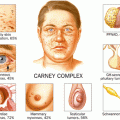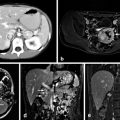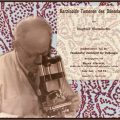Clinical practice guidelines are an invaluable tool in the successful treatment of not only thyroid malignancy but also virtually every other health disorder. The goals of practice guidelines are to improve patient care by providing consensus on stage-specific therapies, reduce the use of unnecessary or harmful interventions, and to maximize the chance of treatment benefit at an acceptable cost to both the patient and society, as a whole. For guidelines to be successful and widely accepted, they must be based on the best current clinical evidence, be methodologically rigorous, be reproducible, have transparency, and be externally validated. As the literature regarding thyroid cancer treatment has increased exponentially in recent years, for clinical practice guidelines to stay relevant, they should be continuously reassessed and ideally amended every 3–4 years [2].
There are currently no published randomized controlled trials to help guide the surgical management of thyroid cancer, and efforts to answer controversial questions are difficult, given the sample size required for such a study to achieve adequate power [3]. Thus, current clinical practice is largely guided by analysis of relevant large retrospective studies and consensus expert opinion. Several notable organizations such as the American Association of Clinical Endocrinologists (AACE), American Association of Endocrine Surgeons (AAES), American Thyroid Association (ATA) , European Thyroid Association (ETA), British Thyroid Association (BTA), and International Association of Endocrine Surgeons (IAES) have developed clinical practice guidelines that standardize treatment within their respective regions. Because some of the available literature falls short of level 1 evidence, none of these recommendations can be considered dogmatic, and no reasonable alternatives can be totally excluded. As such, the adherence to particular recommendations ends up being dependent on the individual practitioner’s preference, available surgical expertise, and regional practice habits. In the most recent iteration of the ATA guidelines on the management of patients with DTC, the strength of each recommendation is classified based on the United States Preventive Services Task Force modified schema (Table 1) [4]. In this chapter, our goal is to examine some of the more controversial updates in the treatment of DTC as described by the most recent ATA guidelines, last published in 2009.
Table 1
Modified from the US Preventative Task force modified schema for grading strength of recommendations [4]
Rating | Definition |
|---|---|
A | Strongly recommends—good evidence suggests that intervention can improve health outcomes |
B | Recommends—fair evidence suggests that intervention can improve health outcomes |
C | Recommends—expert opinion suggests that intervention can improve health outcomes |
D | Recommends against—expert opinion suggests that intervention does not improve health outcomes |
E | Recommends against—fair evidence suggests that intervention does not improve health outcomes |
F | Strongly recommends against—good evidence suggests that intervention does not improve health outcomes |
I | Recommends neither for nor against—evidence is insufficient, conflicting, or of poor quality |
Well-Differentiated Thyroid Cancer (DTC)
According to the National Cancer Institute’s Surveillance, Epidemiology, and End Results (SEER) program, as of 2011 , there was an estimated 566,700 people in the USA living with thyroid cancer. The incidence has continued to increase each year; approximately 63,000 new thyroid cancers will be diagnosed in 2014 in the USA, a greater than threefold increase since 1973 [1, 5]. Of these, up to 90 % are DTC, such as papillary thyroid cancer (PTC) or follicular thyroid cancer (FTC) [5]. In 1996, the ATA published its first version of clinical guidelines on the diagnosis and treatment of DTC [6]. These were subsequently revised in 2006, which particularly sought to outline more authoritative recommendations on the controversial topics of diagnostic evaluation of thyroid nodules, the extent of surgery for small thyroid cancers, the use of radioactive iodine (RAI) ablation following thyroidectomy, the use of thyroxine suppression therapy, and the role of recombinant human thyrotropin (rhTSH) [7]. The 2009 revision offered clarification of prior recommendations, as well as consideration of new information derived from studies published since 2004 [8]. A representative group of endocrine surgeons from Europe and head and neck specialists were also included in this iteration of the ATA task force panel in an effort to be more comprehensive in the review of guidelines, especially those related to prophylactic central-compartment neck dissection. An additional revision of the ATA guidelines is in process, as of the publication of this text, which will again clarify current recommendations and focus on less aggressive approaches to small, unifocal, low-risk tumors to help prevent morbidity associated with potential overtreatment.
Thyroid Nodules and the Diagnosis of DTC
It has been estimated that up to 87 % of thyroid cancers in the USA are ≤ 2 cm in greatest diameter [5, 9]. Once a nonpalpable lesion has been incidentally found on imaging or a palpable nodule has first been detected on physical examination, the evaluation for potential malignancy is of the utmost importance for expedient diagnosis, staging, and prevention of disease progression. The goal of this initial evaluation should be to reduce the use of unnecessary or harmful interventions and to maximize the chance of treatment benefit at an acceptable cost. A comprehensive history and physical examination should be performed, including evaluation of risk factors such as head or neck irradiation, endemic goiter, personal or family history of thyroid adenoma or cancer, Cowden disease, Gardner syndrome, or familial adenomatous polyposis. Physical examination should include palpation of the thyroid and cervical neck lymph nodes, including the lateral neck and supraclavicular region. The first recommendation of the 2009 ATA guidelines highlights the next step in the initial evaluation of any thyroid nodule or if thyroidal uptake is seen on fludeoxyglucose (F18)-positron emission tomography (18FDG-PET) scan [7, 8].
Recommendation 1
Measure serum thyroid-stimulating hormone (TSH) in the initial evaluation of a patient with a thyroid nodule. If the serum TSH is subnormal, a radionuclide thyroid scan should be performed using either technetium 99mTc pertechnetate or 123I. Recommendation rating: A [8].
As serum TSH levels reach the upper limits of normal or higher, there is a direct correlation with increased risk of malignancy [10]. This would suggest that malignancy is rarely seen in a hyperthyroid setting, therefore obviating the immediate necessity for further cytologic evaluation in patients with suppressed TSH levels; in this setting, a radionuclide thyroid scan should be performed [11]. Conversely, an occult malignancy cannot be ruled out in the setting of a euthyroid or hypothyroid state and further cytologic evaluation is indicated [11]. Amended from a “C” rating in the 2006 version, this guideline now carries a recommendation rating of “A,” noting that it is strongly recommended based on good evidence [7, 8].
Diagnostic ultrasound (US) of the thyroid and cervical lymph nodes (central and lateral compartments) should be performed for any palpable nodule, thyroid enlargement, or lesion incidentally found on other imaging modalities [7, 8, 12, 13]. This will help to determine how large the nodule is, the location within the gland, the composition of the nodule (solid or cystic), whether there are any additional nodules or associated lymphadenopathy, and whether any nodule or lymph node has benign or malignant features. DTC will involve cervical lymph nodes in up to 50 % of patients, with micrometastases reported to be as high as 90 % in some series [14]. Characteristics of thyroid nodules that are worrisome for malignancy include hypoechogenicity, hypervascularity, the presence of microcalcifications, and/or irregular borders of the nodule; features of abnormal metastatic lymph nodes include loss of fatty hilum, rounded (not oval) shape, hypoechogenicity, cystic change, calcifications, and peripheral vascularity [11, 14]. Previous studies have examined the importance of preoperative US in patients with a suspicion for malignancy on fine-needle aspiration (FNA), as physical examination alone has a poor sensitivity for identification of central-compartment lymph node metastases and identification of clinically occult lymph node metastases can change the operative management in up to 25 % of patients [15–17]. Identification of these lymph nodes allows for a more complete initial operation, possibly decreasing rates of cervical recurrence in patients with PTC [18] .
Recommendation 2
Thyroid sonography should be performed in all patients with known or suspected thyroid nodules. Recommendation rating: A [8].
Recommendation 21
Preoperative neck US for the contralateral lobe and cervical (central and especially lateral neck compartments) lymph nodes is recommended for all patients undergoing thyroidectomy for malignant cytologic findings on biopsy. US-guided FNA of sonographically suspicious lymph nodes should be performed to confirm malignancy if this would change management. Recommendation rating: B [8].
Multiple small retrospective studies have demonstrated the incidence of malignancy in incidentally found thyroid lesions to range between 8.6 and 29 %, a higher rate than has been reported in palpable nodules [5, 19, 20]. This underscores the importance of evaluation of the thyroid with cervical US in patients with thyroid nodules found incidentally. In the 2009 ATA guidelines, Recommendation 2 carries a rating of “A,” previously a “B,” noting that it is strongly recommended based on good evidence [7, 8]. For staging purposes and operative planning, if there is US evidence of invasive primary tumor or nodal metastasis, cross-sectional imaging (computed tomography, CT; or magnetic resonance imaging, MRI) should be obtained [8].
FNA is currently the most accurate and cost-effective method for evaluating a suspicious thyroid nodule or lymph node, although its usefulness is dependent on obtaining adequate material for diagnosis. Sub-centimeter thyroid nodules do not routinely require FNA; however, they should be considered in the setting of radiation exposure, personal or family history of thyroid cancer, elevated TSH, Hashimoto’s thyroiditis, or US findings of increased central hypervascularity, hypoechoic mass, microcalcifications, or infiltrative margins [8, 11, 12, 14]. US-guided FNA, when compared to palpation guidance, significantly reduces the rate of nondiagnostic and false-negative cytology specimens that would then require repeat FNA [20]. The sensitivity of FNA for detecting malignancy has been demonstrated to be approximately 70–80 %; repeat FNA increases the sensitivity of diagnosis on nodules with initially nondiagnostic or indeterminate cytology [21].
Recommendation 5
A.
FNA is the procedure of choice in the evaluation of thyroid nodules. Recommendation rating: A
B.
US guidance for FNA is recommended for those nodules that are nonpalpable, predominantly cystic, or located posteriorly in the thyroid lobe. Recommendation rating: B [8].
FNA biopsy results were traditionally divided into four categories: nondiagnostic, benign, indeterminate, and malignant (risk of malignancy on final pathology > 95 %) [8]. The National Cancer Institute Thyroid Fine-Needle Aspiration State of the Science Conference proposed an expanded classification that added two additional categories: follicular lesion of undetermined significance (AFUS; risk of malignancy, 5–10 %), and suspicious for malignancy (risk of malignancy, 50–75 %) [8]. The Bethesda System for Reporting Thyroid Cytopathology goes on to redefine the “indeterminate” category as “follicular neoplasm or suspicious for follicular neoplasm” [22]. The ATA recommends that histopathologic variants associated with more unfavorable (tall cell, columnar cell, hobnail, variants of PTC ; widely invasive FTC , poorly differentiated carcinoma) or more favorable (encapsulated follicular variant without invasion, minimally invasive FTC) outcomes should be identified during evaluation and reporting of FNA results [8, 11].
Use of Molecular Markers in Thyroid Nodules with Indeterminate Cytology
Molecular testing of FNA specimens for possible genetic mutations has emerged as a valuable diagnostic tool in select patients with indeterminate thyroid nodules. Mutations in BRAF, RET/PTC, or RAS have been identified in over 70 % of papillary cancers and a mutation in PAX8/PPAR gamma in more than 80 % of follicular cancers [23]. Previous studies have shown that because the presence of BRAF mutations may be associated with higher rates of cervical recurrence and reoperation, preoperative cytologic identification of BRAF mutations may help to guide the extent of thyroidectomy and lymph node dissection [24]. Molecular markers are available for commercial use, and 2009 ATA guidelines state, with level C evidence, that “use may be considered for patients with indeterminate cytology on FNA to help guide management” [8].
More recently, use of gene-expression classifiers has been described to aid in the diagnosis of a benign thyroid nodule in those nodules with initial indeterminate cytology. In a prospective, double-blind, multicenter study, Alexander et al. utilized a gene-expression classifier that measures the expression of 167 genes in a cohort of 265 cytologically indeterminate nodules with corresponding histological specimens. The gene-expression classifier correctly identified 78/85 malignant nodules as “suspicious” (92 % sensitivity, 95 % confidence interval 84–97; 52 % specificity, 95 % confidence interval 44–59). The negative predictive value for FNA classified as atypical was 95 %, suggesting that the gene-expression classifier may have potential value as a test to “rule out” the presence of malignancy [25]. These initial data have subsequently been verified in a separate study of 339 patients undergoing gene-expression classifier testing; in this cohort, 53 of 121 (44 %) of cytologically indeterminate/gene-expression classifier “suspicious” nodules were malignant, while only 1 of 71 nodules that were gene-expression classifier “benign” have subsequently been found to be malignant [26]. A separate study has questioned the malignancy rate utilizing the gene-expression classifier, however, finding a confirmed malignancy rate of only 16 % in gene-expression classifier “suspicious” lesions [27]. Use of the gene-expression classifier has not yet been discussed in ATA guidelines.
Initial Management of Well-Differentiated Thyroid Cancer
Extent of Surgery for Indeterminate Thyroid Nodules
FNA is diagnostic for PTC , but does not preserve the architecture of the thyroid nodule well enough for accurate diagnosis of FTC , making it better used as a screening test for follicular neoplasms . Some studies report that large indeterminate tumors (> 4 cm) have a significantly higher risk of malignancy than smaller tumors (40 vs. 13 % for nodules less than 4 cm), necessitating total thyroidectomy without diagnostic lobectomy [28]. Additional reported factors that carry an increased risk of malignancy include: male gender (43 vs. 16 % for females), patients over age 45 (6 vs. 3 % for age below 45), and when the nodule is judged to be solitary by palpation (25 vs. 6 % for multinodular goiter) [13, 20, 28]. There are other studies, however, that have not demonstrated any of these factors to carry a significant additional risk for malignancy, supporting diagnostic lobectomy with any indeterminate FNA finding [11, 29]. The National Comprehensive Cancer Network (NCCN) guidelines suggest that in the setting of an indeterminate FNA cytology, serum TSH and radionuclide thyroid scan should be done to identify an autonomously functioning nodule that often may be spared from necessitating surgery [11].
After surgical excision, final histology for the majority of indeterminate FNA lesions will turn out to be benign lesions (follicular adenomas, Hürthle cell adenomas, adenomatoid nodules, or hyperplastic proliferations of follicular cells). However, there is still an overall risk of malignancy of 15–30 % within this indeterminate category, and given the lack of clarity in true predictive factors of malignancy in cytologically indeterminate thyroid nodules, surgery is currently recommended for definitive diagnosis [28].
Recommendation 24
For patients with an isolated indeterminate solitary nodule who prefer a more limited surgical procedure, thyroid lobectomy is the recommended initial surgical approach. Recommendation rating: C [8].
Recommendation 25
A.
Because of an increased risk for malignancy, total thyroidectomy is indicated in patients with indeterminate nodules who have large tumors ( > 4 cm), when marked atypia is seen on biopsy, when the biopsy reading is ‘‘suspicious for papillary carcinoma,’’ in patients with a family history of thyroid carcinoma, and in patients with a history of radiation exposure. Recommendation rating: A [8].
Extent of Surgery for DTC
There has been considerable debate regarding the optimal management and extent of surgical resection for DTC with no evidence of extrathyroidal extension or regional or distant metastases. Earlier recommendations suggested a total or near-total thyroidectomy for cancers > 1 cm, even though any difference in survival favoring total thyroidectomy over lobectomy had only been demonstrated in tumors > 3 cm [7, 11]. These recommendations were based largely on the possibility of multifocal disease, recurrence, and other practicalities of treatment and follow up. In 2007, Bilimoria et al. utilized the National Cancer Data Base (NCDB) to examine outcomes based on the extent of surgery for PTC ; the authors found that the extent of surgery did not impact recurrence or survival in PTC < 1 cm. In contrast, patients with a PTC ≥ 1 cm who underwent thyroid lobectomy alone had significantly higher risks of both recurrence and death [30]. As a result, the current guidelines state that the initial surgical procedure for patients with PTC should be total/near-total thyroidectomy, although thyroid lobectomy alone may be sufficient treatment for low and moderate risk PTC [11].
PTC measuring < 1 cm, or papillary thyroid microcarcinomas (PTMC), may be incidentally discovered in up to 10 % of all thyroidectomy specimens for benign disease and account for approximately 30 % of all PTC [5, 8, 31]. They carry a decreased cancer-specific mortality rate of 0.4 %, versus up to 7 % seen with tumors > 1.5 cm [32]. An occult finding in 5–35 % of all autopsies assessed, microcarcinomas rarely progress to clinical disease and likely follow an indolent course [5, 19, 20, 32]. Therefore, the necessity to aggressively treat this finding with total thyroidectomy has come into question and studies have suggested that microcarcinomas may be overtreated. Ito et al. have demonstrated in a cohort of 1235 patients with PTMC that only younger age (< 40 years) was an independent predictor of PTMC progression and that older patients may be optimal candidates for observation without any surgical intervention [33]. A recent study examining patients with PTMC in the SEER database showed that, in 29,512 patients, there was no difference in 5- and 10-year disease-specific survival between patients with PTMC who underwent partial versus total thyroidectomy, suggesting that patients may be overtreated with no benefit to overall survival [34].
Stay updated, free articles. Join our Telegram channel

Full access? Get Clinical Tree








